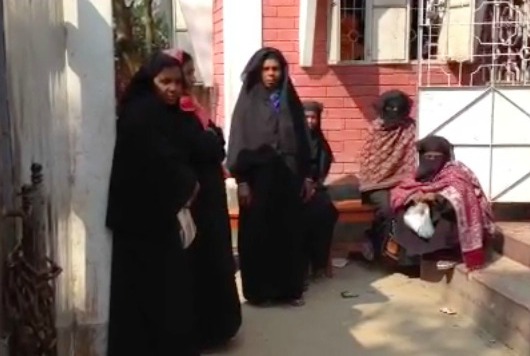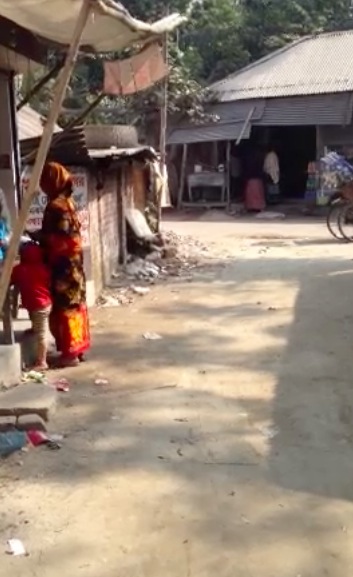BEST Intentions
Unlike Araihazar, Laksam was unfamiliar to the BEST researchers and their Bangladeshi staff. They had no local connections: the Bangladesh Medical Research Council, which had granted permission for BEST, had no local presence, and the local office of the Ministry of Health and Family Welfare wasnt much help. Nor did the government agencies work together effectively. Recalls Parvez: The ministry is huge. It is more focused on running the national health system than [coordinating with] this small office of medical and ethical clearance [BMRC]. Nonetheless, Haider and Parvez made the rounds of local officialdom, touching base with the health authority and the Department of Public Health Engineering (DPHE). The DPHE oversaw the public drinking water supply and had a natural interest in arsenic-related research projects. Parvez explains:
By law you should contact your local medical authority or local governmental facility when you are doing a study, especially if you do something on a large scale in relation to arsenic.
Haider and the three field workers he had hired went first to the local hospital to put together a list of study candidates. They then plunged into the exhausting task of educating potential participants about the trial and trying to persuade them to take part. Several aspects of the trial protocol made it difficult to recruit subjects. For one, the area was culturally conservative. Women, for example, rarely left the house. That had implications for the study: it might be difficult to persuade women to contribute blood and urine samples. Another problem was what might be called research fatigue. Over the years, villagers in high-arsenic areas like Laksam had experienced drive-by visits from international research teams more interested in collecting samples and moving on than engaging with the community and addressing its need for safe water. [26]

For all these reasons, a priority was to find a local liaisonsomeone known and trusted by the community who could introduce the researchers and give the project credibility. Says Parvez: In these situations, if you are an outsider and you dont know a lot of people, that will make you very nervous. [27] The researchers felt fortunate when Abdur Razzak contacted them in April 2007 about work. He was well connected locally, an experienced administrator who had worked on both government and NGO arsenic projects. He had heard of the BEST project and offered his services. Haider and Parvez hired him as local coordinator, helping to screen and recruit participants for the trial.
With Razzak to introduce them, the group began to approach village elders one by one. The elders in turn called meetings of the villagers, at which the BEST team explained the project. They then scheduled meetings one-on-one to go over details. Razzak was invaluable. Although barred from recruiting in his home village because another NGO was already conducting research there, Razzak knew many people in neighboring communities. [28] By the end of May, BEST had enrolled an additional 1,099 participants in Laksam. That brought the number near the required cohort of 3,500 from BEST, with another 3,500 supplied by ICDDR,B. BEST was fully launched.
At the urging of Bangladesh-Superfund Director Islam, the research team created a standard operating procedure for implementing the research protocol, and trained all project workers including field research officers, non-medical workers, and lab technicians. They also circulated the standard international Good Clinical Practice (GCP) guidelines among the medical staff and made sure that staff involved in every aspect of the trial understood and practiced them.
In June 2007, Haider appointed Razzak a village health worker, responsible for 40 or 50 study participants. Razzak was one of 233 field workers BEST hired to check on participants in other villages. Recalls Haider:
We wanted our village health workers to visit each of the participants five or six days a week to know whether the participants were taking their pills regularly or not. And whether they had any health problems, whether they were visiting hospital, or anybody died.All that information was collected, almost each and every day of the week. [29]
Dr. Ahmed Talat Haider outlines Razzak's duties as village health worker.
Unfortunately, Razzak seemed to have some unacceptable ideas about his autonomy as a health worker. Haider had reports that Razzak was trying to divert and sell pills intended for BEST participants. The attempt was unsuccessful, because the supply was carefully tracked. Moreover, he may have been stymied by the fact that the pills were intentionally unmarked, so neither Razzak nor anyone else could tell a placebo from a functional pill. When confronted, Razzak pleaded a misunderstanding. Haider kept him on, but watched him more carefully.

Meanwhile, under the agreement Parvez and Rahman had secured, UNICEF and the Dhaka-based consulting firm Participatory Management Initiative for Development (PMID), in August began to distribute for free the Sono water filters to BEST participants in Laksam who lacked access to safe water. PMID employees trained villagers how to use and clean thedrip filters, which slowly and percussively yielded five liters a night. The distinctive filters included a red bucket for arsenic- contaminated water, which then filtered into a green bucket for safe water.
Razzak, however, again ran afoul of his BEST supervisors. In August, he sabotaged some of the filters, disabling them by removing some of the parts and claiming they were defective. Haider felt he had no option but to dismiss him, and by September Razzak was no longer with BEST. Haider thought no more about it.
[26] Islam.
[27] Bowen telephone interview with Faruque Parvez, January 31, 2012.
[28] The NGO conducting other research was Dhaka Community Hospitals.
[29] Lundberg interview with Ahmed Talat Haider February 4, 2012, in Araihazar, Narayongonj, Bangladesh. All further quotes from Haider, unless otherwise attributed, are from this interview.